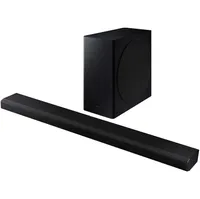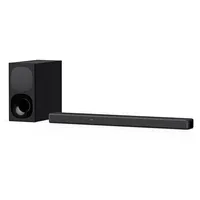TechRadar Verdict
The Philips B8905 delivers stunning Dolby Atmos effects for its lowered price, and we love that it has two HDMI passthrough ports. But the bass is a bit intrusive, and be aware that it’s for TVs of 55 inches and up only.
Pros
- +
Precise and strong Dolby Atmos positioning effects
- +
Great speech clarity out of the box
- +
Two HDMI passthrough ports, plus Wi-Fi
- +
Excellent value after a price drop
Cons
- -
Bass stands out from the overall sound
- -
Lower-mid range is a little soft
- -
Slightly confusing menus
Why you can trust TechRadar
Philips B8905: two-minute review
The Philips B8905 (which you might also see called the TAB8905) is a big Dolby Atmos soundbar that launched at a price to rival similar Atmos bars from the likes of Sonos and Samsung. Except it's now had a huge price cut to put it in line with more mid-range soundbars, yet it still delivers high-end features and 3D sound skills.
So in this Philips B8905 review, we're going to be judging it at its new price, because our understanding after discussing it with Philips is that it should be staying at the new lower price long-term. And based on that, and it's ridiculous collection of features, it's an undeniable bargain.
It's a big soundbar, we need to be clear on that up front – it is suitable for TVs of 55 inches and up. But that means it can fit in a speaker array to rival the best soundbars out there, packing a total of eight drivers in the 'bar, plus one in the wireless subwoofer.
The result is that the Philips TAB8905 is up there with much more expensive soundbars when it comes to giving you the Dolby Atmos effect you want from a soundbar like this. Sounds appear to come right from the ceiling and nearly to the side of you when they're supposed to, and follow the action across the screen expertly. It really makes the most of Atmos' object-based audio – it's the strongest implementation of this we've heard from a mid-priced soundbar. Speech clarity is excellent too, which is always vital for a TV speaker.
And then you've got its two HDMI passthrough ports – meaning that it actually adds an HDMI port to your TV, effectively – plus Wi-Fi support for streaming music from iPhone or Android easily. Oh, and Bluetooth.
However, it's not perfect. The subwoofer feels imperfectly integrated with the rest of the sound, and so it stands out too much in scenes where it's in use. You can dial it back using the remote, but the menus are also fairly confusing. And its size might be an issue for some, of course.
If you've gone for one of the best 55-inch TVs or bigger and want an affordable way to add whizzy Dolby Atmos sound, this is very hard to beat. But if you've got a smaller set, or if you'd prefer to have a more seamless soundstage and can spend a little more, you should look to the Samsung HW-Q800A. If you'd rather spend a little less for a better sound balance and can live with less strong Dolby Atmos effect, the Sony HT-G700 might be ideal.
Sign up for breaking news, reviews, opinion, top tech deals, and more.

Philips B8905 review: Price & release date
- $399 / £369 after price drop
- Released in 2021, at $599 / £739
When the Philips B8905 was released, it was higher price – more in competition with the likes of the Samsung HW-Q800A and Sonos Arc.
But as mentioned above, that's all changed. At retailers such as Best Buy in the US and Currys in the UK, you'll see prices under $400 / £400. This is listed as a discount from the full price, but it's TechRadar's understanding from speaking with Philips that the lower price will continue for the foreseeable future, though there might be some variation on the exact price.
This puts it in competition with the Sony HT-G700 or Sonos Beam 2nd Gen, both of which offer Dolby Atmos support, but are smaller and don't have as many speaker drivers, so rely on virtual Dolby Atmos height rather than real width and height. The Philips really stands out as excellent value in that sense.
You can also check out the latest Philips promo codes for ways to save on this soundbar and more tech from the manufacturer.
And while it's older (it was announced back in 2020), it hasn't really missed a beat on features since then – it's got basically everything we'd want from a new soundbar released today. Speaking of which…
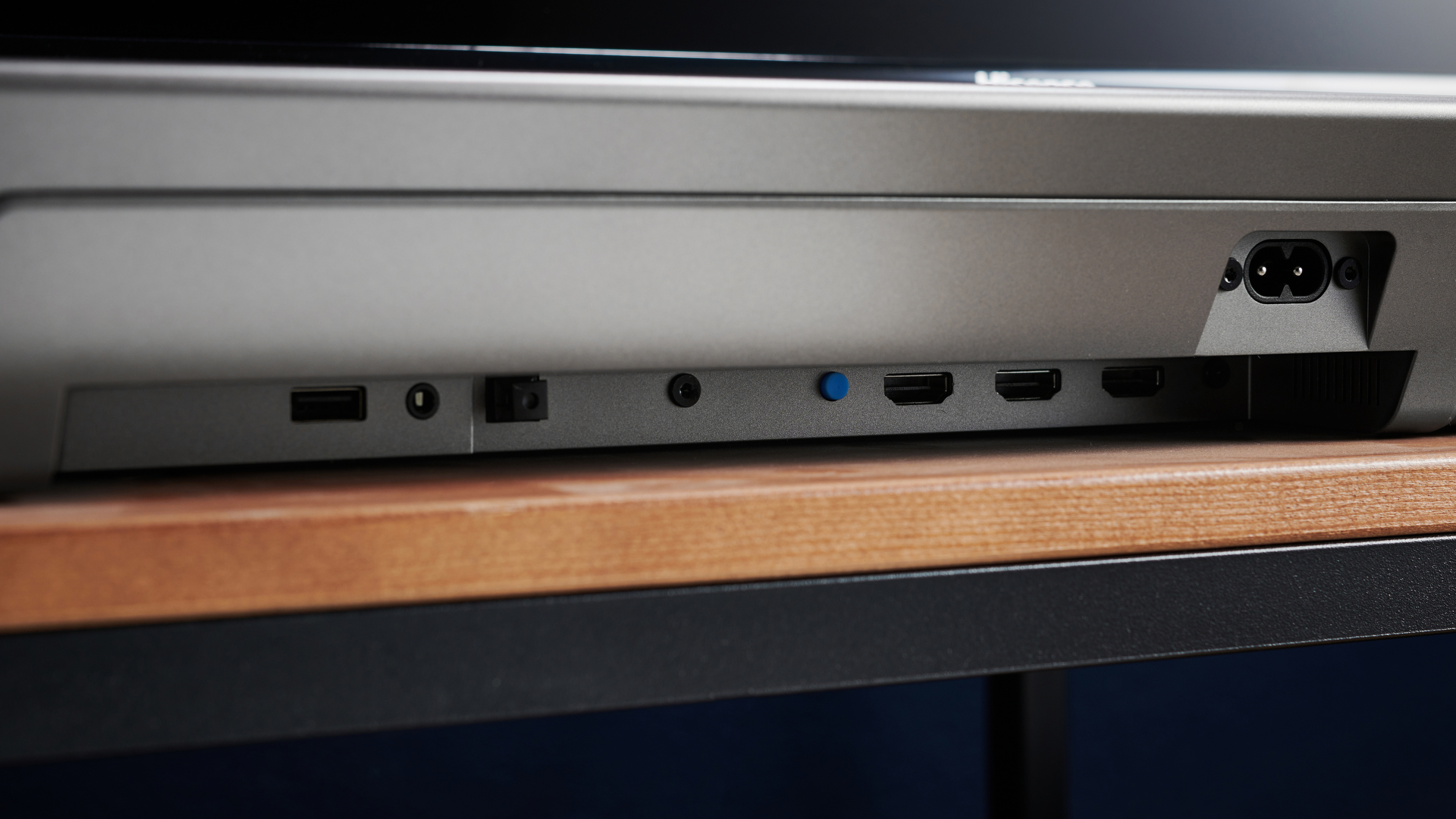
Philips B8905 review: Features
We've already mentioned a lot of the features in the Philips B8905, but here's a bit more detail.
Let's start with the speakers, where you're getting one full-range driver and one tweeter for each of the centre, left and right channels, and then one full-range driver each for the two upfiring height channels. The subwoofer features a single eight-inch woofer. The total output power is rated at 600W.
The HDMI eARC port supports Dolby formats up to Dolby Atmos, but there's no support for DTS formats such as DTS:X here, despite support for DTS:Play-Fi wireless connectivity.
The two HDMI passthrough ports support 4K HDR passthrough, including both Dolby Vision and HDR10+, so there's no downside to using them, other than that they don't support HDMI 2.1 gaming features – but you barely get that in high-end soundbars, so we wouldn't expect it here anyway.
For wireless streaming, there's Apple AirPlay 2, Google Cast, Spotify Connect and DTS:Play-Fi – that's more than most soundbars offer. Bluetooth 4.2 is also here – there's no aptX.
It can be controlled with Google Assistant and Alexa, and it comes with a remote control, and a small screen on the bar show showing what changes you're making.
You can switch between different equalizer modes, or you can make more specific tweaks to the sound balance.

Philips B8905 review: Sound quality
We've already mentioned this, but the impressive thing about the Philips B8905 that's got it our recommendation is just how strong and clear it is with Dolby Atmos positional effects. However, it has it limits, particularly in the mid-range – and the bass is something you really need to read about, because it might not be for you.
But let's start with the Atmos stuff. 'Overhead' sounds really come from the ceiling, things that are aimed to our left and right come from the wall beyond the edges of the screen, and movement follows anything moving on-screen impressively.
In the 1989 Batman movie's scene where Joker invades the museum, he lights candles with with a flamethrower that sparks from right to left across the screen as it ignites. Later, the Batwing's engines streak from the top-right corner of the screen to the bottom left as it swoops down to attack.
Back in the museum, the POV shot where Batman escapes with Vicky using his grappling cable puts the sound of the motor right above you, as if it's you riding on his wonderful toy.
In The Matrix, there's another great demonstration of the height when the sprinklers turn on in the Agents' skyscraper interrogation layer (weird spot, when you think about it). Water sounds fall from the ceiling way above the TV down through the frame.
When Neo enters bullet time, and you get the deliberately extreme width and surround effects of the bullets streaking past as the camera circles, there's a more convincing sense of the sounds coming from the side than a lot of other soundbars can manage. Including more expensive ones.
Details, especially at the higher end, are detailed and sharp. When bullets rain down from Neo's gun on the helicopter, they all tinkle and bounce with individuality across the width of the screen.
The midrange is where things can fall off a little – it can sometimes feel like it's a bit suppressed compared to the higher-end in scenes where both are employed and sounds are dynamically moving between them.
When the soundtrack gets absolutely filled with music and effects reaching a cacophony, it feels like the soundbar has reached its limit. Its capacity is filled, and some distinction is lost, compared to something like the Sonos Arc.
However, having said that, dialogue is always perfectly clear, even when things get busy. And that's true out of the box – I felt no need for the Voice option, even though there is one.
Our biggest issue is that the the subwoofer also doesn't always feel seamlessly integrated with the rest of the soundstage. There are times when it steps in and out of audibility like a hard threshold has been crossed, so suddenly there's a burst of deeper bass.
Some movie scenes ride on that threshold, and you can hear the sub switching in and out, and it's quite prominent. Turning the subwoofer volume down alone doesn't really help – I tried using the EQ to reduce bass a bit and that made the effect less noticeable, though still imperfect. The subwoofer feels unruly – a bass law unto itself that aids most of the time, but catches the attention too much whenever it's borderline. The sub of the Sony HT-G700 is better integrated at this price, though that soundbar's Dolby Atmos effects are nowhere near as good.
Music isn't bad here at all – we were worried the midrange issues would leave it feeling too hollow, and it's definitely lacking a bit of lower-midrange (which we suspect is the issue with its integration to the sub). Listening to familiar songs sometimes feels like a puzzle piece is missing, but it's quite pleasant, especially with female vocals, thanks to the amount of detail it offers overall towards the higher end, especially in Music mode.
But the subwoofer integration issues are even more noticeable here, and you get the 'untz untz untz' bass that you probably don't want unless you're recreating your teenage years.
At least, that's with music over HDMI (PCM). Over AirPlay, the whole sound profile shifts deeper, which actually improves the integration with the sub to a notable degree, but depresses the enjoyable brightness of the high end a bit.
We should also note that we had an issue where our Apple TV's menus came through weirdly loud when it was connected through the TV, with movies soundtracks coming in quieter, so switching between those two was annoying, since you had to ride the remote a bit. However, piping the Apple TV through the soundbar directly solved this, equalizing the audio levels from it – so if you find a box has a similar issue, try that.

Philips B8905 review: Design
The Philips B8905 is pretty utilitarian looking. It's a kind of gunmetal gray and has a sloping front edge, plus a hard grille all over the soundbar. The subwoofer feels a little cheaper than the sleek little box you get from the Samsung HW-S800B, but that's understandable because it is cheaper.
As we've mentioned, both units are fairly big in the grand scheme of soundbars. At 1120 x 64 x 113mm (w x h x d) for the soundbar, you'll need a TV of 55 inches or larger (we tested with a 65-inch TV).
The subwoofer is 230 x 400 x 407mm, so will need a reasonable bit of space to accommodate it.
The ports are all lined up on the back of the soundbar and are easy to find and access. The soundbar can be wall-mounted too, and comes with some fixings for this in the box.
We'd basically describe it all as functional. In the case of the ports, that's the best you can ask. In the case of the design, it's more faint praise.
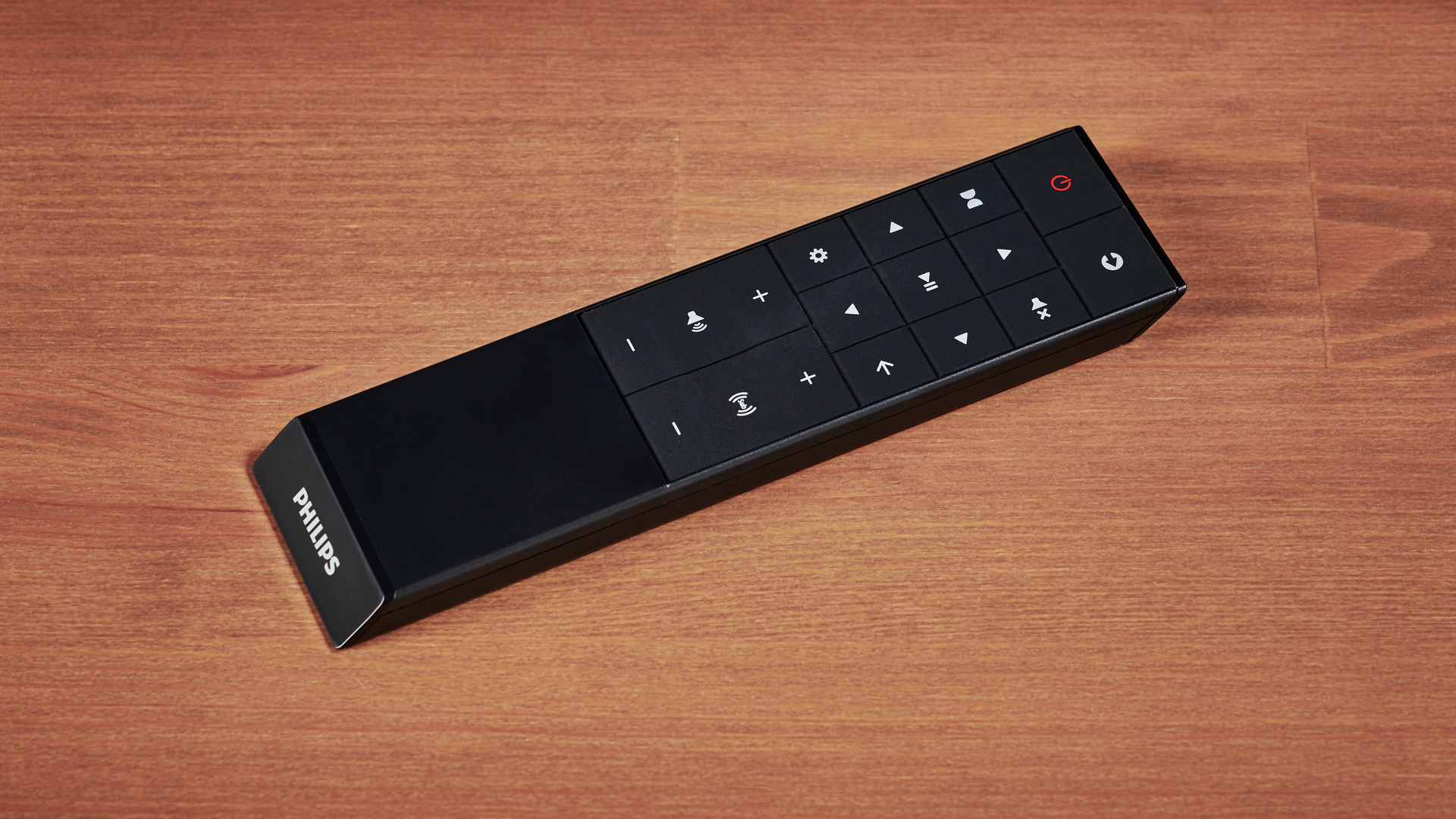
Philips B8905 review: Usability & setup
Setup for basic listening is a cinch. Just plug it into your TV's HDMI ARC/eARC port, plug both parts into power, and you're away. The sub and soundbar connected without any problems, and that was that.
To set it up for Wi-Fi connectivity, you'll need an app, which takes you through the process step by step. On iPhone, it will register as a potential AirPlay speaker, which means the Settings app itself will pass on your Wi-Fi details to it, making it extra easy.
So that's all great – getting it all working was no problem at all. It immediately took over our TV's sound, and worked perfect with controls being passed over HDMI.
Using its menus from its own remote are where it maybe lacks a little clarity. The screen gives just about enough information, but do you go left and right or up and down to adjust things? The middle button, which seems like it should be a 'Select' button is actually a 'play' button, which doesn't help.
With trial and error, you will quickly work it out. And then you will forget, and next time you use it you'll go through the exact same process again – even if it's the next day, as we can tell you from experience.
It's not a big flaw, because it's rare to tinker with your soundbar settings, but we still wish it were clearer.
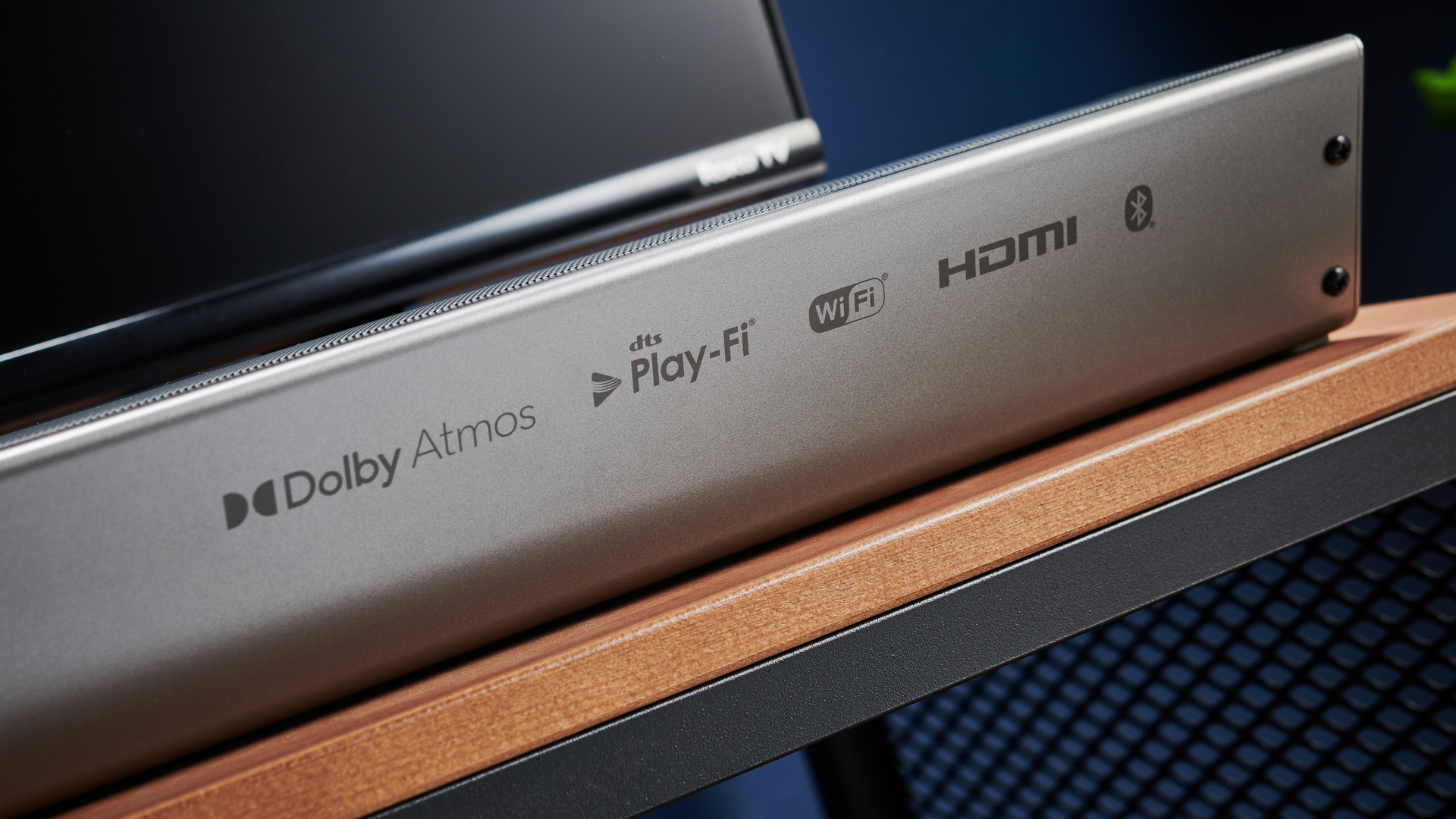
Philips B8905 review: Value
At its lower price, the Philips B8905 is excellent value for those who want the biggest and most spectacular Dolby Atmos effects on a lower budget. Nothing at this price provides such convincing height and width, or such precision in on-screen movement. The detail is excellent for the most part, which is a big part of this.
And nothing else offers this level of features elsewhere. Having two HDMI passthrough ports along makes it a dream buy for those who've bought TVs with just three HDMI ports and are desperate for more.
However, when it comes to the balance of the soundstage and the integration of the subwoofer, other options have done it better. So while we recommend the Philips B8905 overall, it's with that in mind – it's excellent in two key areas, but weak in another.
Should you buy the Philips B8905?
| Attributes | Notes | Rating |
|---|---|---|
| Features | Two HDMI passthroughs, Atmos and multiple streaming options? It's only missing DTS support. | 4.5/5 |
| Sound quality | Fantastic Dolby Atmos effects, and great clarity. Shame the bass is awkward, though. | 3.5/5 |
| Design | Well made and practical, but not pretty. | 3.5/5 |
| Usability and setup | Easy to get started with, but using the menus isn't intuitive. | 3.5/5 |
| Value | You won't get these features and Atmos effects this good from anything else at this price. | 4.5/5 |
Buy it if…
You want a big Dolby Atmos experience for less
The height and width effects here are seriously impressive – as good as soundbars twice the price.
You can't afford to lose an HDMI port on your TV
With two (count' em!) HDMI passthrough ports, this soundbar gives you more connections than you started with.
You want lots of streaming options
With AirPlay, Google Cast and Spotify Connect on board, it's so easy to use this to play anything you like from your phone.
Don't buy it if…
You have a TV smaller than 55 inches
It's big and it will stick out past your TV if its screen is any smaller than this. The Philips B8905 is designed to give a broad sound for larger TVs.
Imperfect bass would annoy you
The awkward integration between subwoofer and midrange frequencies won't be something that everyone picks up on, but if you've got a tuned ear, it's likely to annoy you.
You want something to fit with fine decor
It's not really a looker. It's not ugly, but it's definitely not pretty either.
Also consider…
Samsung HW-Q800A
This is the most direct competitor to the Philips. It's a little more expensive, but it's also smaller, so works for TVs of 50 inches and up. You get real upfiring drivers, Wi-Fi streaming and HDMI passthrough, plus a better-integrated sub. But the Philips offers the second HDMI passthrough and marginally better Dolby Atmos effects for a lower price.
Sony HT-G700
A smaller soundbar (good for TVs of 50 inches and up) that still includes Dolby Atmos and a subwoofer. The bass is much better integrated here, but the Dolby Atmos effect is nowhere near as crisp and precise, and there's no Wi-Fi. It does have an HDMI passthrough port, though (but only one). It's cheaper than the Philips, though.
Samsung HW-S800B
It's about twice the price of the Philips, but this is a very similar soundbar in terms of offering excellent Dolby Atmos effects, plus Wi-Fi streaming. Its overall sound balance is better too – its bass in particular is smooth as silk – and it's much smaller and better looking than the Philips (though is still for TVs of 55 inches and up). However, it lacks the HDMI passthrough ports.
- First reviewed: July 2022
- How we test: read TechRadar's reviews guarantee

Matt is TechRadar's Managing Editor for Entertainment, meaning he's in charge of persuading our team of writers and reviewers to watch the latest TV shows and movies on gorgeous TVs and listen to fantastic speakers and headphones. It's a tough task, as you can imagine. Matt has over a decade of experience in tech publishing, and previously ran the TV & audio coverage for our colleagues at T3.com, and before that he edited T3 magazine. During his career, he's also contributed to places as varied as Creative Bloq, PC Gamer, PetsRadar, MacLife, and Edge. TV and movie nerdism is his speciality, and he goes to the cinema three times a week. He's always happy to explain the virtues of Dolby Vision over a drink, but he might need to use props, like he's explaining the offside rule.

